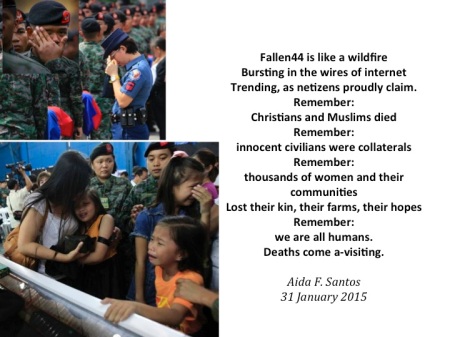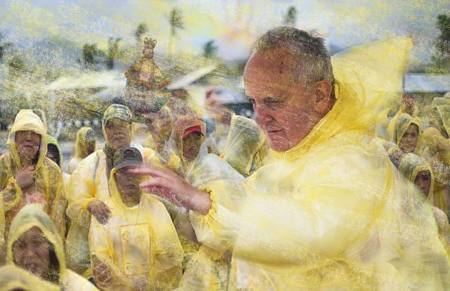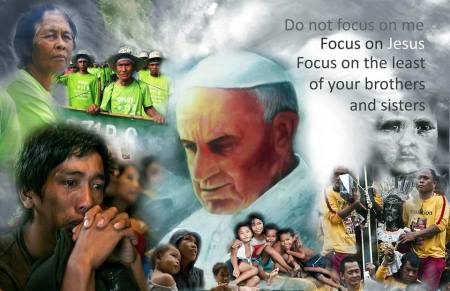
The Local Government Code she signed into law toward the end of her term is a less acknowledged legacy of Cory Aquino’s presidency. But for those who have persisted in the work of organizing people for power at the basic community level, this provided a framework for new possibilities. But also new challenges to classical organizing.
After EDSA 1986, the focus of those who wanted more than a mere restoration of pre-martial law democracy was on new spaces at the national level – constitutional provisions on more direct democracy, like initiative, referendum, and recall. Later, the provision for special party lists.
Coming from the years of struggle for national issues, against the central government, most activists especially those in Metro Manila did not give as much attention to engaging local governments.
My own experience is illustrative. When I visited my hometown of Naujan after my informal exile in Europe, my high school classmate Nelson Melgar, who was the town mayor, challenged me: “When will you help your own hometown?”
We decided to work together to train the devolved agricultural extension workers in community organizing. After that, we scanned the barangays for national NGOs working in the area. We found a number of them, but they were not in touch with the local government.
Participatory Local Governance
The more systematic introduction I got to PLG – participatory local governance, came from Gerry Bulatao who headed a consortium with two key partners, Balay Mindanaw in Misamis Oriental, with Kaloy Manlupig and Ayi Hernandez, and Teody Pena of Quidan Kaisahan and Paginupdanay in Negros Occidental.
Although they were a national consortium, their focus was on local governance and development, in mainly rural communities. Hence the contentious issue of agrarian reform remained a central concern. But what interested me most was their organizing innovation to form sectoral people’s organizations and to forge their partnership with the local government at the barangay-bayan level.
Their field staff would train leaders of people’s organizations in CO-CD (community organizing for community development). The barangay officials would be given a separate training on provisions of the local government code on people’s participation. Then the two groups would come together to do joint participatory rural appraisal, followed by drawing up a barangay development plan, whose results were presented to a pledging session with government and non-government agencies.
The new approach had uneven results, especially on issues like agrarian reform that could not be resolved only at the local level. The organizers had to develop additional skills, especially in alliance work.
PLG had the perspective of SIAD (sustainable integrated area development). That’s why Kaloy called the community organizers SIADO – sustainable integrated area development organizers. It also communicated the orientation that the organizers should have, to be unobstrusive like shadows and focus on the growth of the PO leaders and barangay officials.
A similar orientation and approach was used in the programs of ANIAD in Antique, with Arnold Vandenbroek and Goldie Chan. They asked Oca Francisco and COPE to train their field staff in the classical organizing methods.
What about conflict-confrontation?
The challenge of PLG was how to balance the emphasis on helping mobilize people to act independently on their issues, and helping them and the barangay officials to work together on agreed upon priorities. There were still confrontations and negotiations, not so much with barangay officials but higher officials.
The default mode of classical organizing is to treat officals as unwilling to respond except under democratic pressure. As the people experience positive partnership with some local officials, they had to adjust their understanding of people power, as not just for resistance but also for engagement.
Jesse Robredo’s has said that “Good local governance can be the conclusion of our unfinished revolution.” He followed this up with words that could be, but should not be misread, as discouraging militancy: “This revolution can also be anchored on people like you, who serve rather than criticize, collaborate rather than divide, build up rather than tear down. People who engage to understand.”
Institutionalizing People Power: The Naga City People’s Council
Those of us who advocated popular democracy, to include principled partnership with reformers in government, still prefered to look for ways to institutionalize people power outside the existing power institutions.
We were pleasantly suprised at Cory Aquino’s call to make people power permanent in the form of people’s councils, and held consultations at the national level on how to implement it.
It took the NagaPopdem activists to establish this on the ground in Naga City. It helped that the city mayor was Jesse Robredo, open to engagement with the citizenry. But the bigger factor was the strong presence of NGOs and people’s organizations in the city. They set up the Naga City People’s Council, and used this as the platform for engaging the elected city officials.
They went one step further. With the encouragement of Mayor Jesse, they successfully lobbied for the passage of a city ordinance that recognized the Naga City People’s Council and formalized its access to the processes and structures of the city council.
The NCPC experience deserves a more in depth study, since it is still a work in progress, with its share of success and challenges. But it poses an important question to those who are committed to organizing people for power. As we build strong people’s organizations through issue-based mobilization, conflict-confrontation, and negotiations, is our perspective to use this power only to elect or be elected as officials?
Or is a people’s council the way to institutionalize people power independently while also seeking to enter the established institutions of power?
The challenge is how to insure that the members of the people’s council maintain their initiative, and not let the secretariat do the work. And for the people’s council itself to pursue independent action and not limit itself to joint work with government.
This reminds me of an idea from the revolutionary movement on alliances – “Independence and initiative within the united front.”
New wineskins and new wine
Naga City had another innovation called “reengineering the local school board.” Jesse Robredo opened the local school board to citizens’ participation beyond its traditional members. Legal constraints did not allow the new participants to vote, but they had full rights to take part in the scrutiny of how the special education fund would be spent.
In this case there was greater initative from the government compared to the citizens. Ideally, a reengineered school board should have a counterpart base in an independent coalition of education advocates and stakeholders, similar to the Naga City People’s Council.
In rural barangays, some NGOs pursued the idea of a council of people’s organizations independent of the elected barangay council. But as PLG programs developed, instead of setting up these people’s council, organizers chose to use the mandated Barangay Development Council as the structure for institutionalizing people’s participation.
The Barangay Development Council is mandated to have at least 20% of its members from community leaders other than the elected officials. And the BDC has the power to allocate the barangay development funds for priority projects which are identified in the process of developing the barangay development plan..
These structures are like new wineskins. But they also need new wine. Otherwise, the danger is that they will be new ways of coopting and taming the people’s energies, rather than new ways of tempering them in these new sites of struggle.
Beyond Islands of Hope: Toward an Archipelago of Hope
Participatory local governance and good local governance are a welcome source of hope for organizers of people for power. They offer useful lessons. And their numbers continue to increase, symbolized by the Galing Pook award winners for excellence in local governance.
The award gives much weight to the leadership of the elected officials and the impact of their projects. The criteria include people’s participation, but this is not as well measured. I am glad to hear from Eddie Dorotan of the Galing Pook foundation that they are developing an award for citizens’ participation.
Although we celebrate and value these local “islands of hope,” we ask ourselves: What about the national level? How do we work toward a whole “archipelago of hope?”
At a workshop organized by Synergeia, I heard this question posed to Jesse Robredo, a multiple Galing Pook awardee. He didn’t know then that he would have the chance to do something about it.
As Secretary of the DILG, one of his innovations was initially called BUB, “bottoms up budgeting” based on local poverty reduction action plans, LPRAP. This was meant to make the local government involve the people’s organizations in making their local development plan. Another is his full support for the option of “people’s proposals” for resettling urban poor settlers from endangered sites.
What more could Jesse have accomplished had he not died?













Recent Comments